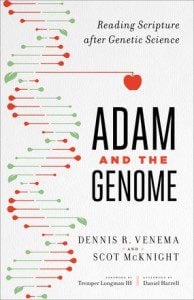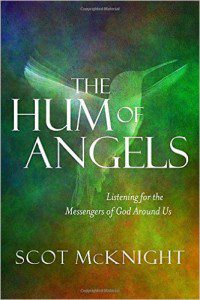From City Church SF [this you, Fred?]: “When I begin seeing the leaves turn, when I smell the turkey roasting in the oven, when the familiar Christmas jingles start playing on every commercial – I know it’s time. My calendar still reads November, which makes it hard to believe that invitations to Christmas parties are already showing up in my Inbox. But Christmas intrudes into our present like an old friend, who reliably shows up time and again with the promise of something new.How do you experience time? I know someone who feels time is an enemy. She’s constantly running out of time. Often, life feels frantic and out-of-control for her. She’s always saying, “So much to do; so little time!” Knowing the inevitably of time’s endless rhythm, a few wise old souls many, many years ago decided to order time in a certain discernable pattern, a pattern that echoed the even more ancient Jewish cycles of worship and prayer, but markedly different. The Christian calendar would become a way of ordering time centering on the life, death, and Resurrection of Jesus Christ. And its rhythm would hold the very real potential of ordering our lives around His Story, so much so that we might be able to relinquish our need to somehow control time, or relax our fear of running out of time. What if your story was somehow ordered by a larger Story? What if you could relinquish the frantic need to master time, and relax into a more sacred rhythm? What if this season of Advent could mark a renewal in your life, a renewal of your time? This week, the Christian calendar begins with the Season of Advent, the beginning of our Christian calendar year.”
Advent is about Desire, according to James Martin SJ: “Advent is all about desire,” an elderly Jesuit in our community used to say every year as November drew to a close. And whenever he said it, I would say, “Huh?” But gradually it dawned on me. Christians desire the coming of Christ into their lives in new ways, a desire that is heightened during Advent. The beautiful readings from the Book of Isaiah, which we hear during Advent, describe how even the earth longs for the presence of God. The wonderful “O antiphons,” sung at evening prayer and during the Gospel acclamations towards the end of Advent, speak of Christ at the “King of Nations and their Desire.” The Gospel readings in the coming weeks tell of John the Baptist expressing Israel’s hope for a Messiah. Mary and Joseph look forward to the upcoming birth of a son. My friend was right. It’s all about desire.”
Nick Rynerson: “The Onion has finally done it. I am pretty sure that this was the plan of the Onion and all of its content for the last decade. Last week the Onion released a piece, in classic Oniony fashion, naming North Korean supervillian/supreme leader/newlywed Kim Jong Un the sexiest man alive.”
A lengthy summary and video of Bill Craig vs. James Crossley.
Good take by my friend Karen at her blog… with quite the story.
Fun: the opening sentence to twenty-one books.
Lee Wyatt on what to do about Christimas: “I hold in my hands the essential tools for liberating Christmas from its captivity to North American capitalistic, consumeristic culture. The Dr. Seuss taleHow the Grinch Stole Christmas; C. S. Lewis’s Narnia story, The Lion, the Witch, and the Wardrobe; the “Christian Seasons Calendar”; and the Bible. In U. S. News & World Report a few years ago, Jeffrey Sheler surveyed what he called “the battle for Christmas.” His thesis was: from the time when Christians began celebrating Christ’s birth (which surprisingly seems not to be until the fourth century when the Roman Emperor Constantine made Christianity the religion of the empire), from that beginning the celebration of Christ’s birth was locked in a desperate struggle to “christianize” the midwinter Roman festivals of Saturnalia and various other pagan sun deities. The fascinating history Sheler recounts alerts us to the danger of nostalgia in our present skirmishes over this contested season. There never was a time, it seems (Norman Rockwell notwithstanding!), that Christmas enjoyed a pure, unsullied status, free of the taint of commercialism and excess – a time from whose heights we fell and to which we must return. No, the reality is that we are still groping towards a clearer understanding and proper celebration of the birth of the Savior. If we are going to get free of the dreadfulness of Christmas present it will not be through revisiting Christmas past but rather by boldly pushing ahead into Christmas future. And that’s what I want to do this morning – to envision what Christmas future might be and what kind of people we must become to live out that vision.”
A good reason to check sources and facts: “Well, this is a letdown. Remember last week when we told you about how NASA’s Curiosity rover had reportedly sent back some very interesting data from Mars in the form of a soil sample that could be, in the apparent words of one of the mission’s leaders, “one for the history books”? Yeah, well, now NASA is saying that all the hype is actually just a giant misunderstanding between the scientist and the NPR reporter who interviewed him—a mistake that was then multiplied many times over by each news outlet (again, including us) who picked up the story.”
Meanderings in the News
 Ain’t nothing like Chicago politics.
Ain’t nothing like Chicago politics.
Moral judgment: “The researchers studied adults who watched videos of people who suffered accidental harm (such as being hit with a golf club) and intentional harm (such as being struck with a baseball bat). While watching the videos, brain activity was collected with equipment that accurately maps responses in different regions of the brain and importantly, the timing between these regions. The technique is known as high-density, event-related potentials technology. The intentional harm sequence produced a response in the brain almost instantly. The study showed that within 60 milliseconds, the right posterior superior temporal sulcus (also known as TPJ area), located in the back of the brain, was first activated, with different activity depending on whether the harm was intentional or accidental. It was followed in quick succession by the amygdala, often linked with emotion, and the ventromedial prefrontal cortex (180 milliseconds), the portion of the brain that plays a critical role in moral decision-making. There was no such response in the amygdala and ventromedial prefrontal cortex when the harm was accidental.”
Fun item 5 history/science myths: “Scientific discovery may require reason, rationality, and a firm handle on the facts, but science history has its share of myths, urban legends, and tall tales. Thought experiments are misinterpreted as real experiments; the scientist with the most interesting story gets the credit for a discovery; misunderstandings are repeated from science teacher to science student. Although these tales of heroic (and fantastically lucky) scientists may be exaggerated, however, the scientific discoveries and theories involved are all very real.”
There has been very little good reporting or commentary on the vote about female bishops in the C of E. You get liberal media types (here) who seem to think the church ought to reflect liberal democracies and who seem to think it’s about those fundamentalists again, and you get crusty people like Gerald Bray on his FB page who combines good facts with opinionations about it being those liberals again, and you have to wrestle them all to the ground to see that this issue is about how to treat the priests and parishes who differ on this very issue once the inevitable happens.
Sad news about HIV, by Julie Steenhuysen: “CHICAGO (Reuters) – More than half of young people in the United States who are infected with HIV are not aware of it, according to a report by government health officials that zeroes in on one of the remaining hot spots of HIV infection in America. Young people ages 13 to 24 account for 26 percent of all new HIV infections, according to the report by the U.S. Centers for Disease Control and Prevention, which was released on Tuesday in advance of World AIDS Day on December 1. “Given everything we know about HIV and how to prevent it in 30 years of fighting the disease, it’s just unacceptable that young people are becoming infected at such high rates,” CDC Director Dr. Thomas Frieden said on a conference call with reporters. Every month, 1,000 young people in America become infected with HIV, an incurable infection that costs $400,000 to treat over a lifetime, Frieden said. If left untreated, HIV infection leads to AIDS and early death. “The data are stark and worrying,” Dr. Kevin Fenton, director of the National Center for HIV/AIDS, Viral Hepatitis, STD and TB Prevention at the CDC, said in a telephone interview. In 2010, 72 percent of the estimated 12,000 new HIV infections in young people occurred in young men who have sex with men, and nearly half of new infections were among young, black males.”
Michelle Dean on used books… great read. I’ve got some good finds myself, including FF Bruce’s copy of Jeremias’ unknown sayings of Jesus auf Deutsch.
The 1950s lasted through 1964, and the 1960s began after that: “Late 1964 was a buoyant time for the majority of Americans: a prosperous year that promoted extraordinarily high expectations about the future. As in the previous twenty years, large numbers of people were flocking to buy houses in the suburbs and climbing into the middle classes. If there could have been a nationwide soundtrack for late 1964, it would have been especially upbeat, featuring hit songs by the Supremes (“Baby Love,” “Come See About Me”), the Beatles (“A Hard Day’s Night,” “I Feel Fine”), and the Beach Boys (“I Get Around”). John F. Kennedy’s eloquent calls for a New Frontier had raised expectations his death could not dim. Liberals, led by President Johnson, redoubled their efforts for reform. In May, speaking before some eighty thousand enthusiastic listeners (including Republican governor George Romney) at the University of Michigan’s football stadium, Lyndon Johnson had called for congressional approval of a Great Society — a hugely ambitious set of domestic reforms and programs. That August, Congress appropriated $1 billion to support the Economic Opportunity Act, which promised to wage a “War against Poverty.”
Brandon Keim: “If you could escape the human time scale for a moment, and regard evolution from the perspective of deep time, in which the last 10,000 years are a short chapter in a long story, you’d say: Things are pretty wild right now. In the most massive study of genetic variation yet, researchers estimated the age of more than one million variants, or changes to our DNA code, found across human populations. The vast majority proved to be quite young. The chronologies tell a story of evolutionary dynamics in recent human history, a period characterized by both narrow reproductive bottlenecks and sudden, enormous population growth.”
This is what happens when philosophers (Leszek Kolakowski) talk about God and happiness. “Happiness is something we can imagine but not experience. If we imagine that hell and purgatory are no longer in operation and that all human beings, every single one without exception, have been saved by God and are now enjoying celestial bliss, lacking nothing, perfectly satisfied, without pain or death, then we can imagine that their happiness is real and that the sorrows and suffering of the past have been forgotten. Such a condition can be imagined, but it has never been seen. It has never been seen.”
Avoid that mid afternoon surgery.
Evangelicals enter Judaism: “For the families of Bello, the journey to Judaism began after the minister of a 3,000-member evangelical church, the Center for Integral Family Therapy, visited Israel in 1998 and 2003 and began to feel the pull of Judaism. Juan Carlos Villegas, who has taken on the Hebrew name Elad, then told his flock that he planned to convert. Dozens joined him. “These people had the capacity to say, yes, I’m open to finding the roots of my family,” said Villegas, 36, speaking in the community’s synagogue, a white-washed, two-story building on a street of rowhouses. Villegas and the others said they felt history coursing through their veins as they explored the past and put together pieces of a puzzle that pointed to a Jewish ancestry. “It was like our souls had memory,” he said. “It awakened in us a desire to learn more — who were we? Where were we from? Where are the roots of our families?”
Good report by Virginia Hughes.
On the Book of Kells. “The story of the Book of Kells, of the mystery surrounding its provenance and the anonymity of the master scribes and artists who executed it, is a splendid romance. Few emblems of medieval European civilisation have caught the imagination of the international public to the same degree. Every year tens of thousands of visitors to Dublin file through the Long Room of Trinity College to view its intricately decorated pages. The artistry, colour, exuberance and wit that went into the making of this illuminated version of the four Gospels, described in the 11th-century Annals of Ulster as “primh-mind iarthair domain”, “the most precious object of the western world”, are an enduring source of awe and admiration. Here is a spark of brilliant light shining for us out of the Dark Ages.”
Meanderings in Sports
Marvin Miller changed the game: “There have always been two sides to American professional sports. The first is the beautiful game on the field. The second is the sordid world of the owner’s box, in which very rich men who call themselves capitalists build taxpayer-supported monopolies on the backs of players and fans. No one knew the second world better than Marvin Miller. He was a hard-nosed union man who took over the Major League Baseball Player’s Association in 1966.” How? “He called the first successful strike in the history of professional sports. He led the fight against the reserve clause. He ushered in free agency. The world that we see now, of multi-million-dollar contracts and players selling their talents on the open market, is the world that Marvin Miller created.”












